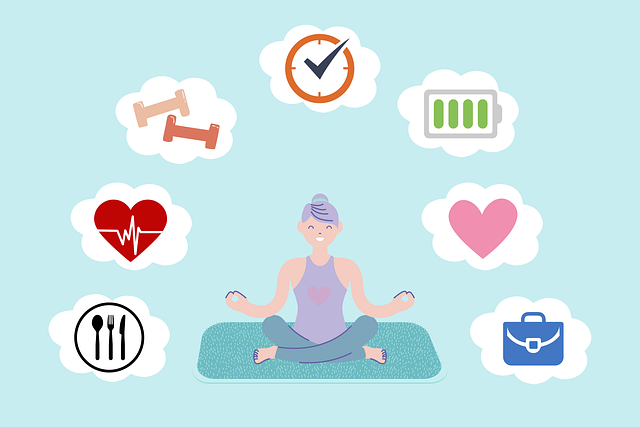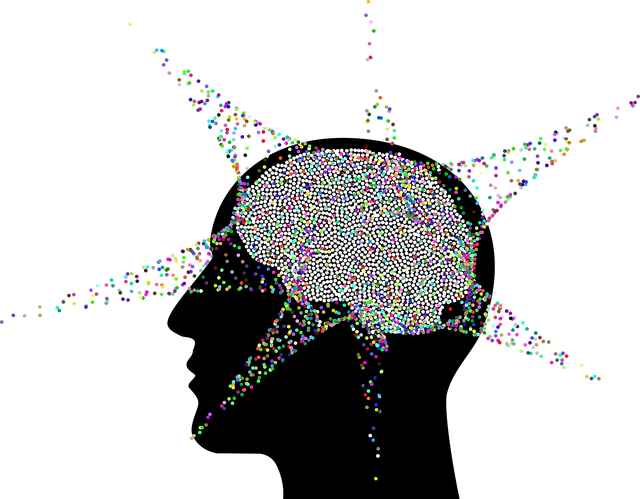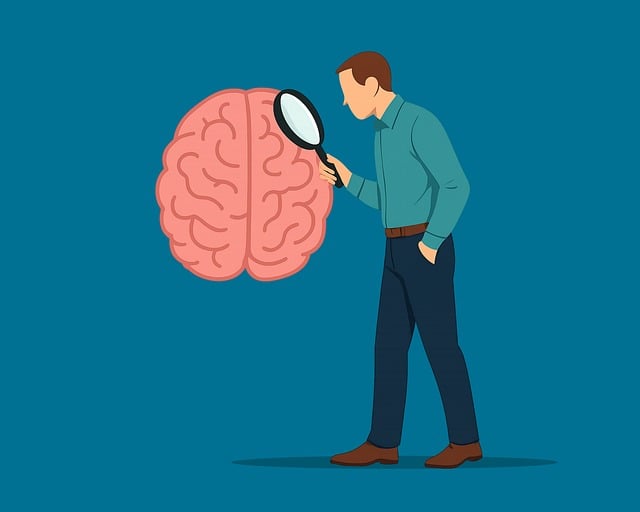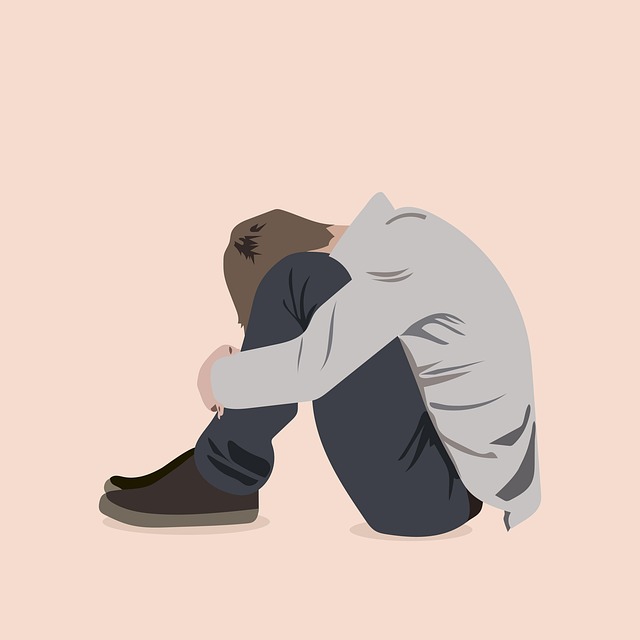Mental illness diagnoses, especially for conditions like Generalized Anxiety Disorder (GAD) and Panic Disorder, require comprehensive assessments involving patient symptoms, medical history, and self-awareness. Early recognition of specific signs, such as anxiety attacks, is crucial. Therapies like Cognitive Behavioral Therapy (CBT) focus on understanding triggers, challenging negative thoughts, and building coping strategies. Educating oneself about the condition, utilizing online resources, and seeking professional help are essential steps in managing GAD and panic attacks. Self-care practices, including mindfulness, exercise, and structured routines, alongside social support and culturally sensitive healthcare, play a vital role in long-term mental well-being for those dealing with Golden Panic Disorder and Anxiety Attacks Therapy.
“Mental illness diagnosis and treatment navigation can be a complex journey, especially with conditions like panic disorder and anxiety attacks. This comprehensive guide aims to demystify the process, offering insights into understanding mental health diagnoses and recognizing symptoms of Golden Panic Disorder and Anxiety Attacks. We explore various therapy options, providing a roadmap for effective treatment. Additionally, practical tips on navigating healthcare systems and essential self-care strategies are highlighted, empowering individuals to support their mental health journey towards recovery.”
- Understanding Mental Illness Diagnoses: Unraveling the Process
- Recognizing Panic Disorder and Anxiety Attacks: Symptoms to Watch For
- Exploring Therapy Options: A Comprehensive Guide for Effective Treatment
- Navigating the Healthcare System: Tips for Smooth Diagnosis and Care
- Self-Care Strategies for Recovery: Supporting Your Mental Health Journey
Understanding Mental Illness Diagnoses: Unraveling the Process

Mental illness diagnoses are complex processes that require a comprehensive understanding of a patient’s symptoms, medical history, and overall well-being. The journey often begins with identifying specific signs and symptoms that align with recognized mental health disorders. For instance, individuals experiencing persistent fear or anxiety that interferes with daily life may be candidates for conditions like Generalized Anxiety Disorder (GAD) or Panic Disorder. During the diagnostic phase, healthcare professionals employ various tools such as detailed assessments, questionnaires, and structured interviews to unravel these complex issues.
The process involves careful consideration of emotional well-being promotion techniques and risk management planning for mental health professionals. Self-awareness exercises can also play a crucial role in early detection, helping individuals recognize their unique triggers and patterns. By combining professional assessment with patient self-reflection, accurate diagnoses become more feasible, paving the way for effective therapy, such as anxiety attacks therapy, to address conditions like GAD or Panic Disorder.
Recognizing Panic Disorder and Anxiety Attacks: Symptoms to Watch For

Recognizing panic disorder and anxiety attacks is a crucial step in effective mental health care. The Golden Panic Disorder, characterized by sudden, intense episodes of fear or discomfort, can significantly impact an individual’s daily life. During these episodes, known as anxiety attacks, individuals may experience physical symptoms such as rapid heartbeat, sweating, trembling, and shortness of breath, accompanied by a sense of impending doom or loss of control.
Understanding the triggers and patterns of these attacks is vital for both patients and mental health professionals. Empathy-building strategies play a significant role in therapy, fostering an environment where individuals feel heard and supported. Effective therapy focuses on cognitive behavioral techniques to challenge negative thought patterns and teach relaxation strategies. Risk management planning is also essential, ensuring that patients have tools to navigate and mitigate future anxiety episodes, ultimately enhancing their mental health awareness and overall well-being.
Exploring Therapy Options: A Comprehensive Guide for Effective Treatment

When navigating therapy options for Golden Panic Disorder and Anxiety Attacks, it’s crucial to approach the process with both hope and discernment. The vast array of therapeutic modalities can initially seem overwhelming, but understanding each approach offers a valuable tool in your journey towards recovery. Cognitive Behavioral Therapy (CBT), for instance, has proven effective in managing anxiety by challenging negative thought patterns and behaviors, while Mindfulness-Based Therapies focus on present-moment awareness to reduce panic responses.
Exploring therapy options also involves considering factors like therapeutic setting, therapist expertise, and cultural sensitivity. Mental illness stigma reduction efforts have made significant strides, fostering more inclusive environments where individuals feel safe expressing their experiences. Emotional intelligence is another key aspect, as therapists skilled in this area can provide empathetic support tailored to your unique needs. Remember, the right therapy match can significantly enhance your treatment outcomes and promote lasting mental well-being.
Navigating the Healthcare System: Tips for Smooth Diagnosis and Care

Navigating the healthcare system for mental illness can be a challenging task, often leaving individuals feeling overwhelmed and anxious. The process of seeking a diagnosis and embarking on a treatment journey is crucial for managing conditions like Generalized Anxiety Disorder (GAD) and panic attacks. Here are some tips to ensure a smoother experience:
Start by educating yourself about your specific condition. Understanding GAD and its symptoms, such as persistent worry and anxiety attacks, will empower you to communicate effectively with healthcare professionals. Building resilience starts with knowledge. Many hospitals and clinics offer online resources and support groups, which can provide valuable insights into managing anxiety disorders. Enhancing mental wellness involves taking charge of your health, and seeking professional help is a proactive step towards self-esteem improvement and overall well-being.
Self-Care Strategies for Recovery: Supporting Your Mental Health Journey

Self-care plays a pivotal role in navigating mental health journeys, especially for those managing Golden Panic Disorder and its associated anxiety attacks. Developing a structured self-care routine can significantly enhance recovery. This involves incorporating activities that promote relaxation, such as mindfulness practices, meditation, and deep breathing exercises, which are known to reduce symptoms of panic disorder. Regular physical activity, maintaining a balanced diet, and adequate sleep are also essential components of a holistic self-care strategy. These practices not only improve overall well-being but also provide effective tools to manage stress and anxiety.
In addition, cultivating social connections and engaging in activities that foster a sense of belonging can be transformative. Support groups, whether online or in-person, offer a safe space for sharing experiences and learning from others facing similar challenges. Cultural sensitivity in mental healthcare practice is crucial here, ensuring that self-care strategies are tailored to individual cultural backgrounds and beliefs. Trauma support services within these communities can further empower individuals to take control of their recovery, making self-care an integral part of their long-term mental health management.
Mental illness diagnosis and treatment can be a complex journey, but with the right navigation tools, individuals can find their way to recovery. Understanding mental health conditions like panic disorder and anxiety attacks is the first step, followed by recognizing symptoms and exploring effective therapy options, such as Golden Panic Disorder and Anxiety Attacks Therapy. Navigating the healthcare system efficiently and adopting self-care strategies are also crucial for a holistic approach to well-being. By combining knowledge, professional guidance, and personal care, individuals can take charge of their mental health and embrace a brighter future.














